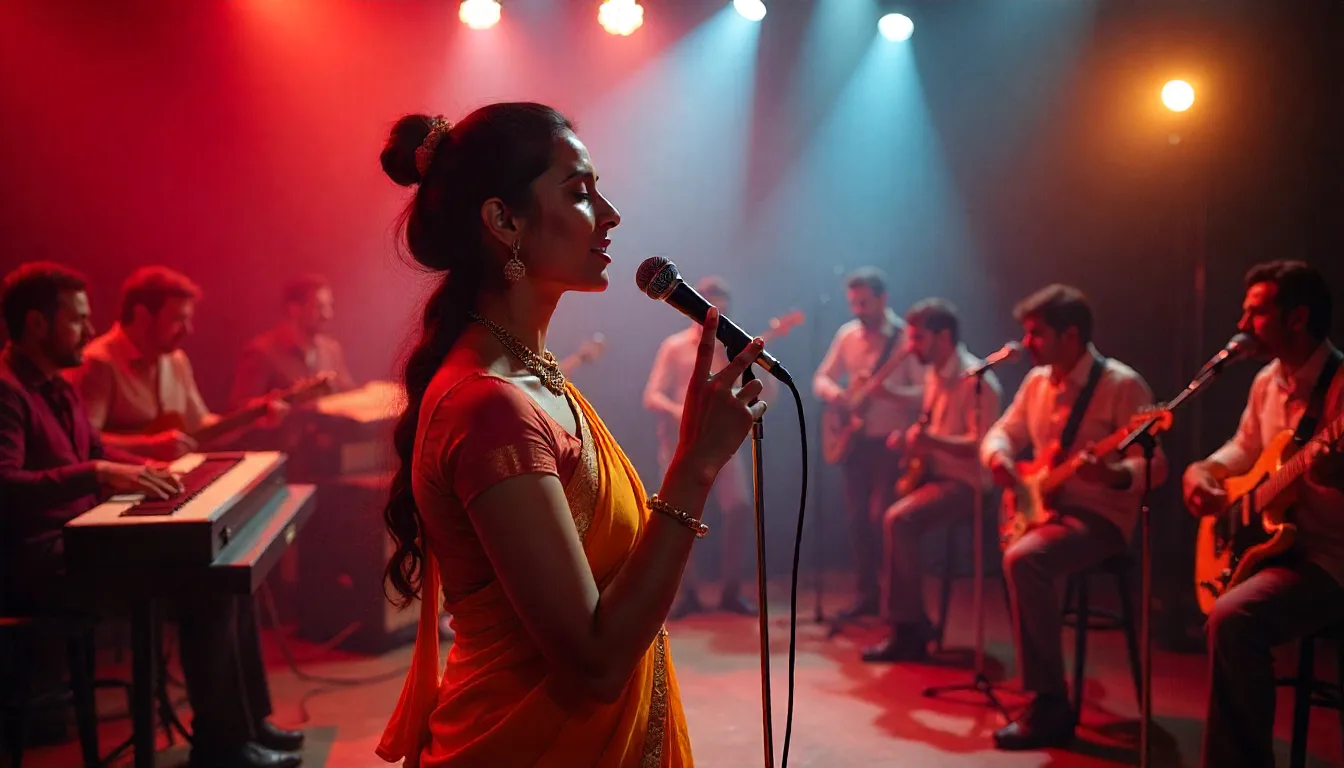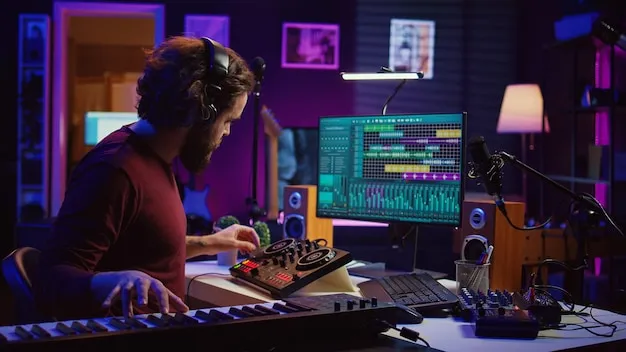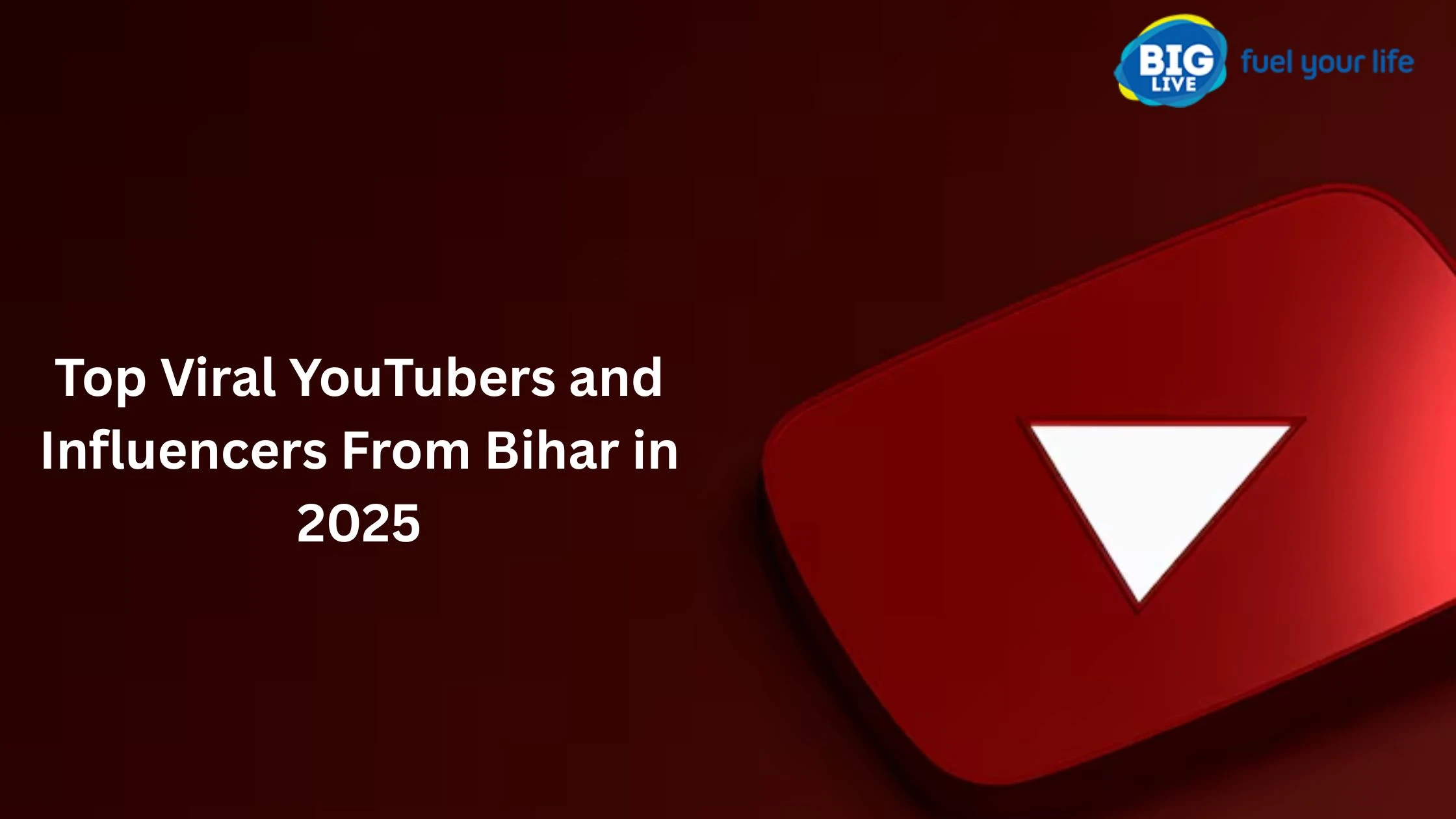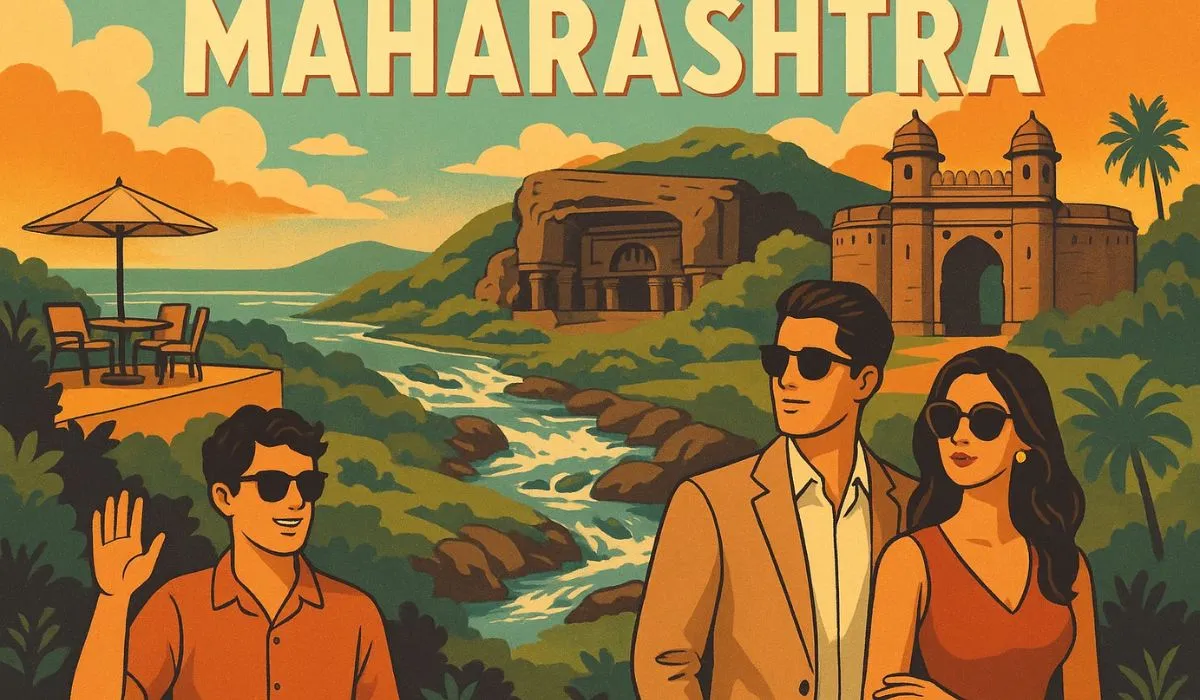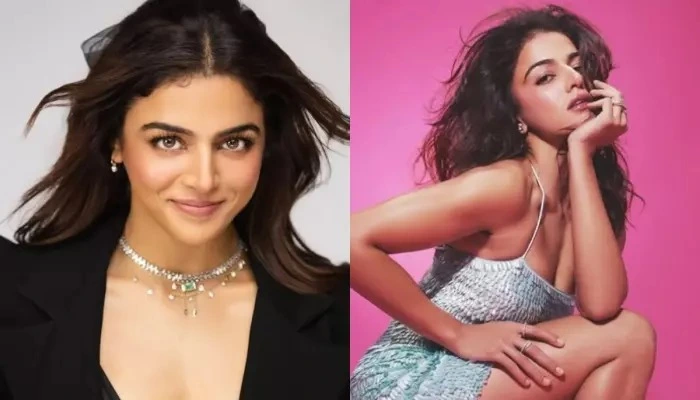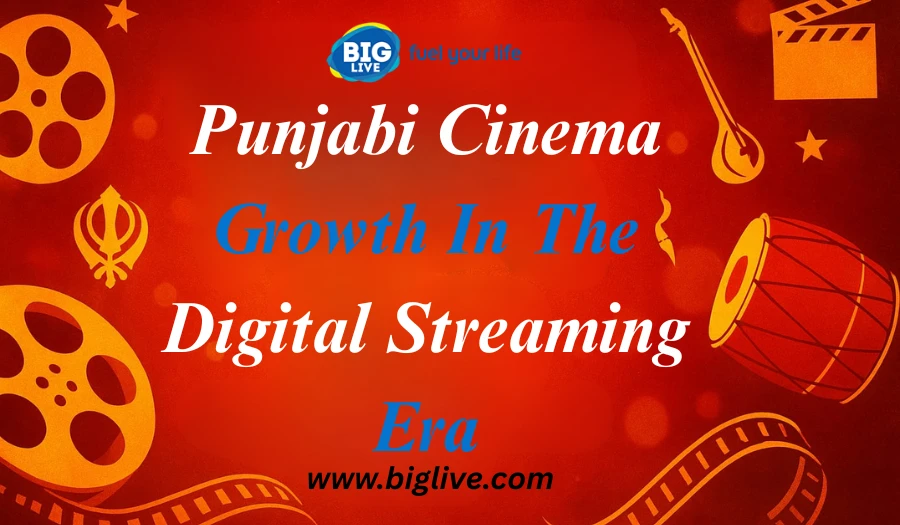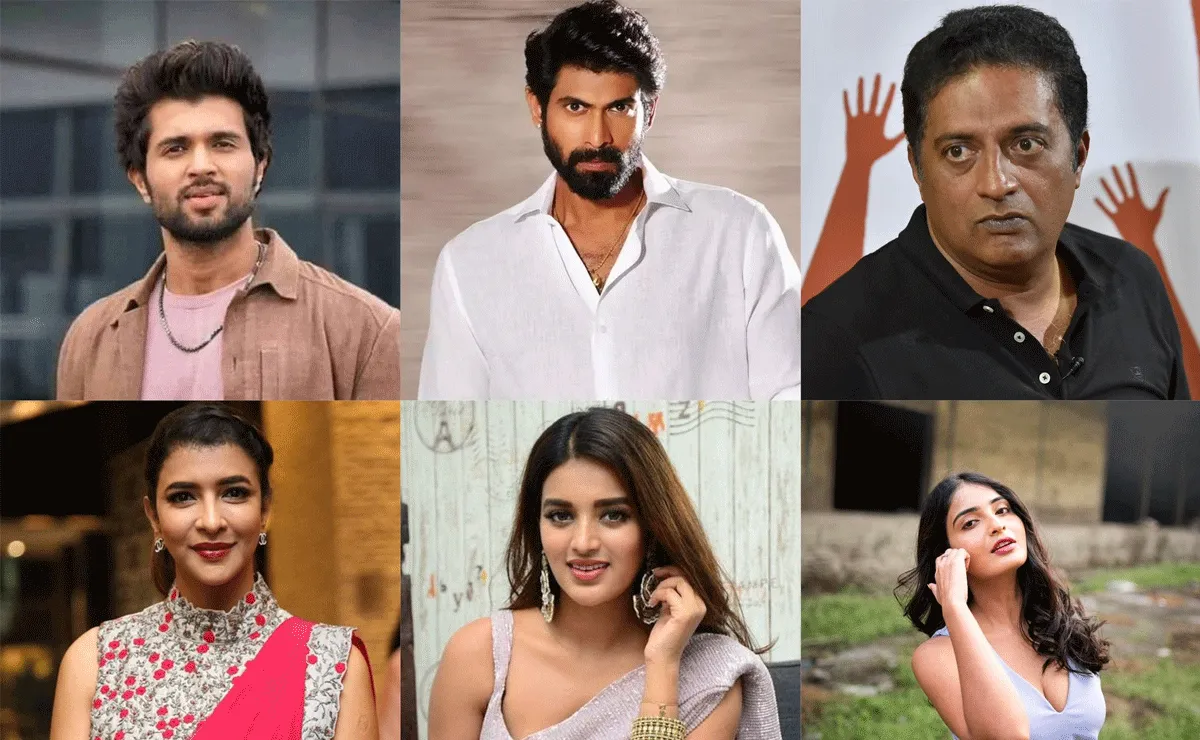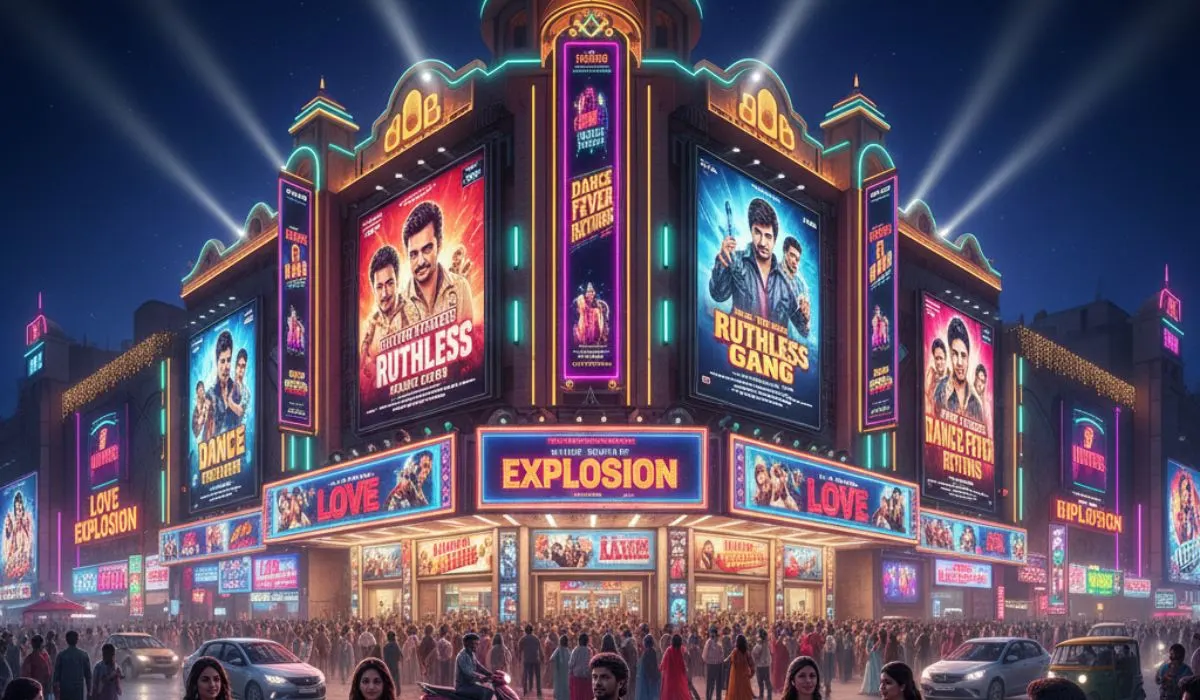The History of The Bollywood Music Industry is shorthand for how India self-discovered through music. Bollywood music has evolved from the studio recordings of the 1930s to the international hits of today, influencing language, memory, fashion, and emotion. Additionally, it evolved from singing done live on set to fully orchestrated studio recordings. It gave birth to playback legends and evergreen melodies that refuse to fade. That’s the heart of it. Let’s walk through how it all unfolded.
History Of The Bollywood Music Industry: The Early Sound Era That Started It All
Sound was introduced to Indian cinema in the early 1930s.Film music originated as songs sung by actors during filming These recordings were raw but full of feeling. As recording tech improved, film-makers realised audiences were coming as much for Hindi film songs as for the stories.
Studios soon hired trained singers and composers. The move from live singing to pre-recorded tracks opened the door to what would later be called playback singing. Once that shift happened, voices no longer had to match actors. Talent could come from anywhere in the country. This single change set up everything that followed in the History Of The Bollywood Music Industry.
People often ask: What is the history of the Bollywood music industry in one line? It began when cinema discovered that music could carry a film beyond language and region.
Read also: Types Of Indian Music For Meditation
Evolution of Bollywood Music: 1940s Foundations to Mass Popular Appeal
The 1940s laid the musical grammar. Orchestral concepts taken from the West merged with Harmonium, tabla, sarangi, and folk tunes. This combination started the protracted evolution of Bollywood Music that would come to define contemporary Indian pop culture.
Studios started pairing dedicated music directors with lyricists. Voices like K. L. Saigal showed that emotional singing could pull crowds. As independence neared, patriotic and romantic numbers alike found space in films. The seeds were planted. By following that early fusion of Indian classical mood with popular storytelling, you may trace how Bollywood music changed from the 1940s to today.
Golden Era of Hindi Film Music: Voices, Orchestras, and Emotion
Any music aficionado will gush about the Golden Era of Hindi film music. Generally the 1950s and 1960s, often extending into the 1970s depending on whom you ask. This was the period when melody ruled and craft was meticulous. This is also when the Bollywood music industry during the 1950s and 60s became a powerhouse. Large orchestras. Lush strings. Smart use of Indian ragas in accessible tunes. Heart-melting duets.
S.D Burman, R. D Burman (later in his career), Shankar-Jaikishan, Naushad, Madan Mohan, O. P. Nayyar, and Salil Chowdhury feature on the long list of masters. Look up famous composers in the golden age of Bollywood to meet the architects of half of the music still played at family gatherings if you desire to go deeper.
Why is this period still loved? Because melody came first. Words mattered. Singers like Lata Mangeshkar, Mohommad Rafi, Kishore Kumar, Asha Bhosle, Mukesh and Manna Dey gave life to every syllable. No surprise people still call it the Golden era of Hindi film music.
Bollywood Music Timeline: Decade-by-Decade Snapshot
Let’s map the big shifts. Think of this as a living Bollywood music timeline you can expand later.
1930s–40s
Talkies arrive. Songs recorded on set. Folk meets theatre. Playback begins.
1950s–60s
Melody golden age. Orchestral richness. Lata, Rafi, Mukesh at peak. This stretch defines the Bollywood music industry during the 1950s and 60s and powers radio culture.
1970s
Rhythm gets bolder. R. D. Burman blends rock, jazz, Latin touches. Kishore Kumar era. Cabaret, funk, and experimentation enter the film score space.
1980s
Synths, disco, and electronic keyboards. Bappi Lahiri. Video cassette explosion. Mass music on TV.
1990s
Romantic revival. Nadeem-Shravan. A. R. Rahman debuts and rewrites sound design. Private albums start competing with film tracks. This is where the modern Bollywood music timeline bends sharply toward global production values.
2000s
Remixes, multi-composer soundtracks, item numbers. Digital mastering improves reach. Music videos matter.
2010s–Now
Streaming platforms. Singles culture returns. Indie and film boundaries blur. Punjabi-pop fusions take over charts. Retro hooks are reworked for new club mixes.You can delve into a more comprehensive timeline of iconic Bollywood music albums spanning these decades to track how formats evolved from vinyl to cassettes to playlists.
Read also: Best Indian Music Playlists For Every Mood
Old vs New Bollywood Music: What Changed and What Stayed
Fans forever debate Old vs new Bollywood music. Are today’s tracks less soulful? Or just different?
Old school strengths: Strong melody. Poetic lyrics. Live musicianship. Distinct singers.
Today’s strengths: Production polish. Genre blending. Dance energy. Wider reach through streaming and shorts.
Sometimes the comparison isn’t fair. Many so-called Classic Bollywood songs were carefully composed over weeks. Modern hits are often built for quick impact and viral loops. Still, when you look closely at Old vs new Bollywood music, you find shared DNA. Hooks, emotional storytelling, and the ability to stick in your head after one listen.
Listeners still return to old tracks because the writing is deep. New songs win because they fit mood-based listening and social sharing. There is space for both. And yes, people still hum the History of Hindi film songs when they’re homesick, nostalgic, or celebrating. That hasn’t changed.
History Of The Bollywood Music Industry Through Playback Singing
Here’s a fun way to understand the whole arc: follow the singers. Playback changed everything. When actors stopped singing live and trained vocalists took over, quality soared. The development of the emotional language relating to love and romance was first shaped by Lata and Rafi. Kishore infused a lot of ease and personality. Udit Narayan and Alka Yagnik, Sonu Nigam, Sherya Ghoshal, and Arijit Singh, to name a few, brought in new vibes in the later generations.
Without playback singing, the History Of The Bollywood Music Industry would be unrecognisable. It allowed one actor to lip-sync many voices. It allowed one voice to speak to millions of faces. It created a musical culture that crossed class and language lines. This blend of cinema, studio craft, and star vocals is at the heart of Bollywood music culture.
Where Streaming Took the Story Next
Cassettes once drove what got heard. Then TV countdown shows. Now playlists and social clips do the work. A romantic ballad can trend on reels months after release. A dance hook can revive a forgotten film. Collaborations between rappers, folk voices, and electronic producers are common.
Archivists are restoring catalogues so younger listeners can rediscover Classic Bollywood songs in high-quality remasters. Old vinyl is getting digital love. Labels are building legacy anthologies. That is the newest chapter in the long History Of The Bollywood Music Industry.
Wrap-Up
India doesn’t just watch movies. It sings them. From the studio halls of the 1940s to today’s global playlists, the History Of The Bollywood Music Industry is really the people’s history of sound. Melodies from the Golden era of Hindi film music still loop through weddings. New dance tracks from streaming charts blast at clubs. Radio nostalgia and algorithm playlists live side by side.
If you care about stories, memory, and emotion, dig into the History of Hindi film songs. Follow the composers. Compare Old vs New Bollywood music. Track your own Bollywood music timeline as you discover hidden gems. The journey is half the joy.



